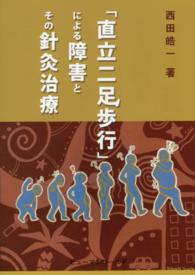Full Description
In March and early April 2009, a new, swine-origin 2009-H1N1 influenza A virus emerged in Mexico and the United States. During the first few weeks of surveillance, the virus spread by human-to-human transmission worldwide to over 30 countries. On June 11, 2009, the World Health Organization (WHO) raised the worldwide pandemic alert level to Phase 6 in response to the ongoing global spread of the novel influenza A (H1N1) virus. By October 30, 2009, the H1N1 influenza A had spread to 191 countries and resulted in 5,700 fatalities. A national emergency was declared in the United States and the swine flu joined SARS and the avian flu as pandemics of the 21st century. Vaccination is currently available, but in limited supply, and with a 60 percent effectiveness rate against the virus.
The story of how this new influenza virus spread out of Mexico to other parts of North America and then on to Europe, the Far East, and now Australia and the Pacific Rim countries has its origins in the global interconnectedness of travel, trade, and tourism. Given the rapid spread of the virus, the international scientific, public health, security, and policy communities had to mobilize quickly to characterize this unique virus and address its potential effects. The World Health Organization and Centers for Disease Control have played critical roles in the surveillance, detection and responses to the H1N1 virus.
The Domestic and International Impacts of the 2009-H1N1 Influenza A Pandemic: Global Challenges, Global Solutions aimed to examine the evolutionary origins of the H1N1 virus and evaluate its potential public health and socioeconomic consequences, while monitoring and mitigating the impact of a fast-moving pandemic. The rapporteurs for this workshop reported on the need for increased and geographically robust global influenza vaccine production capacities; enhanced and sustained interpandemic demand for seasonal influenza vaccines; clear "triggers" for pandemic alert levels; and accelerated research collaboration on new vaccine manufacturing techniques. This book will be an essential guide for healthcare professionals, policymakers, drug manufacturers and investigators.
Table of Contents
Front Matter
Workshop Overview
Appendix A1 Technical Report for State and Local Public Health Officials and School Administrators on CDC Guidance for School (K-12) Responses to Influenza during the 2009-2010 School Year
A2 Predicting Emerging Diseases in the Twenty-first Century: The Case of Zoonotic Influenza
A3 The Spring 2009 Influenza A H1N1 Outbreak: A Local Public Health Perspective
A4 I nternational Law and Equitable Access to Vaccines and Antivirals in the Context of 2009-H1N1 Influenza
A5 In Vitro and In Vivo Characterization of New Swine-Origin H1N1 Influenza Viruses
A6 Estimation of the Reproductive Number and the Serial Interval in Early Phase of the 2009 Influenza AH1N1 Pandemic in the USA
A7 The Severity of Pandemic H1N1 Influenza in the United States, from April to July 2009: A Bayesian Analysis
A8 Hard Choices in Difficult Situations: Ethical Issues in Public Health Emergencies
A9 Rumors of Pandemic: Monitoring Emerging Disease Outbreaks on the Internet
A10 Preliminary Observation of the Epidemiology of Seasonal and Pandemic Influenza A (H1N1) in South Africa, 2009
A11 Reflections on the 1976 Swine Flu Vaccination Program
A12 Southern Hemisphere, Northern Hemisphere: A Global Influenza World
A13 Influenza (H1N1) Pandemic 2009
A14 Origins and Evolutionary Genomics of the 2009 Swine-Origin H1N1 Influenza A Epidemic
Appendix B Agenda
Appendix C Acronyms
Appendix D Glossary
Appendix E Forum Member Biographies
Contents
1 Front Matter; 2 Workshop Overview; 3 Appendix A1 Technical Report for State and Local Public Health Officials and School Administrators on CDC Guidance for School (K-12) Responses to Influenza during the 2009-2010 School Year; 4 A2 Predicting Emerging Diseases in the Twenty-first Century: The Case of Zoonotic Influenza; 5 A3 The Spring 2009 Influenza A H1N1 Outbreak: A Local Public Health Perspective; 6 A4 I nternational Law and Equitable Access to Vaccines and Antivirals in the Context of 2009-H1N1 Influenza; 7 A5 In Vitro and In Vivo Characterization of New Swine-Origin H1N1 Influenza Viruses; 8 A6 Estimation of the Reproductive Number and the Serial Interval in Early Phase of the 2009 Influenza A/H1N1 Pandemic in the USA; 9 A7 The Severity of Pandemic H1N1 Influenza in the United States, from April to July 2009: A Bayesian Analysis; 10 A8 Hard Choices in Difficult Situations: Ethical Issues in Public Health Emergencies; 11 A9 Rumors of Pandemic: Monitoring Emerging Disease Outbreaks on the Internet; 12 A10 Preliminary Observation of the Epidemiology of Seasonal and Pandemic Influenza A (H1N1) in South Africa, 2009; 13 A11 Reflections on the 1976 Swine Flu Vaccination Program; 14 A12 Southern Hemisphere, Northern Hemisphere: A Global Influenza World; 15 A13 Influenza (H1N1) Pandemic 2009; 16 A14 Origins and Evolutionary Genomics of the 2009 Swine-Origin H1N1 Influenza A Epidemic; 17 Appendix B Agenda; 18 Appendix C Acronyms; 19 Appendix D Glossary; 20 Appendix E Forum Member Biographies








